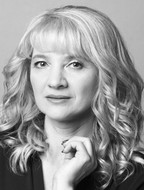Physical culture and health technologies applicable by families to form child's active motor regime
Фотографии:
ˑ:
Dr.Hab., Professor G.N. Golubeva1
Postgraduate A.A. Safiullina1
1Volga region State Academy of Physical Culture, Sports and Tourism, Kazan
The study analyses benefits of the new physical culture and health (PCH) technologies applicable by families from pregnancy through preschool age. The study data show that the key activation factor in the antenatal development period is the special determined physical activity of the future mother using the physical culture and health (PCH) prenatal gymnastics technologies. The child activity manifestations may be listed as follows: high strive for movements; average to high motor activity; determination in using passive developmental tools and accessories of the physical culture and health technologies based on the G. Dogman method including manual skills and balance developing subprograms; active gymnastics including suspension exercises; individualised corrective games; body tempering procedures; and ‘dynamic posturing’ exercises. The child’s progress is rated on the Apgar scale by the relevant static and dynamic functionality rates and physicality rates including the activity scope, duration and intensity rates; sickness rates; motor activity type and rate etc.
Keywords: physical culture and health technologies, motor regime, child, need for movements.
References
- Golubeva G.N. Formirovanie aktivnogo dvigatelnogo rezhima rebenka (do 6 let) sredstvami fizicheskogo vospitaniya v osnovnye periody adaptatsii k usloviyam sredy. Avtoref. dokt. dis. [Cultivating child’s (under 6 years old) active motor regime by means of physical education in the main periods of adaptation to environmental conditions. Doct. diss. abstract]. Malakhovka, 2008, 27 p.
- Golubeva G.N. Soderzhanie fizkulturno-ozdorovitelnykh tekhnologiy formirovaniya aktivnogo dvigatelnogo rezhima rebenka do 6 let [Content of sports and health technologies for active motor regime cultivation in application to children under 6 years of age]. Teoriya i praktika fizicheskoy kultury, 2009, no. 11, pp. 52-54.
- Dvorkina N.I. Sistema formirovaniya bazovoy lichnoy fizicheskoy kultury doshkolnikov [Preschool child’s basic for personal physical culture development system]. Teoriya i praktika fizicheskoy kultury, 2015, 464 p.
- Manzheley I.V. Sredo-orientirovanny podkhod v fizicheskom vospitanii studentov [Environment-centered approach to university physical education]. Teoriya i praktika fizicheskoy kultury, 2005, no. 8, pp. 7-11.
- Safiullina A.A. Stili fizicheskogo vospitaniya v semye [Family physical education styles]. Mater. Vseros. nauch.-prakt. konf. s mezhdunar. uchastiem «Problemy i innovatsii sportivnogo menedzhmenta, rekreatsii i sportivno-ozdorovitelnogo turizma» [Proc. Rus. res.-pract. conf. with intern. particip. "Sports Management, Recreation and Sports and Health Tourism: Problems and Innovations "], Kazan, 2017.




 Журнал "THEORY AND PRACTICE
Журнал "THEORY AND PRACTICE